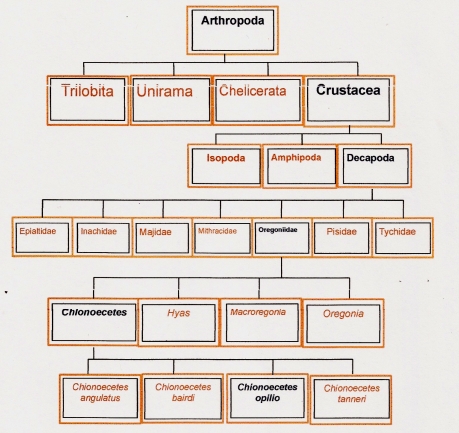Classification
Where in the world does the snow crab belong?
Domain: Eukarya
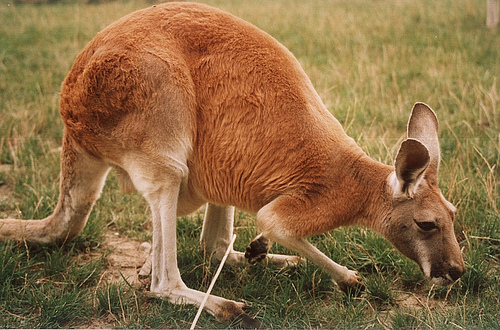
Members of Eukarya are have membrane-bound organelles such as mitochondria, lysosomes, and Golgi Apparati. The cells also possess a true nucleus that contains DNA. Cell division is a common aspect of this domain, including meiosis and mitosis.
Kingdom: Animalia
All members of Animalia are multicellular, heterotrophic, and do not have a cell wall. At some point in their life cycle, most animals show some means of mobility.
Phylum: Arthropoda
Members of Arthropoda have a segmented body, an exoskeleton composed of chitin and proteins, and undergo a process called ecdysis, better known as molting. Arthropods also have an open circulatory system, a ventral nerve chord, and jointed appendages. Organisms such as the American lobster are found within this phylum.
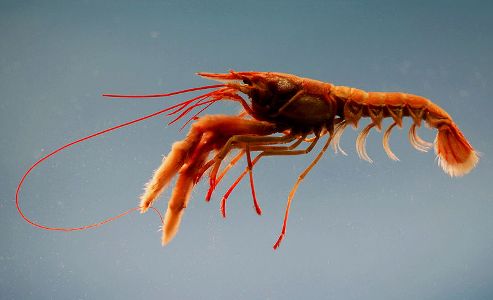 Class: Crustacea
Class: Crustacea
Crustaceans have three segements including the head, the thorax, and the abdomen. They can also possess fused segments. Each has two pairs of antennae, and varying numbers of legs. Majority of the class is aquatic, either marine or freshwater.
Order: Decapoda
Decapods have five pairs of legs including front claws called chelipeds and six smaller appendages for food handling called maxillipeds. The head and body region are combined and called a cephalothorax where the compound eyes are found. Members of this order are either terrestrial or aquatic and therefore either walk or swim.
Family: Oregoniidae
There are only four different genera under this
family. Members of this family possess carapaces with
bumps that are used for decoration and protection, five sets of
legs, compounds found on the head region. All of these members
are aquatic.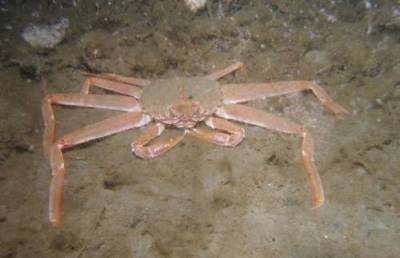
Genus: Chionoecetes
All members of Chionoecetes are located in the northern oceans including the Northern Atlantic Ocean and Northern Pacific Ocean. Carapaces of these organisms are generally round, bumpy and range in color from brown to red. The final molt of members in this genus, is followed by mating and then death.
Species: Chionoecetes opilio
Latin, Chionoecetes opilio is translated as "snow sheppard". The snow crab is thought to have gotten the name due to its snowy-white meat. Adult members of this species can reach a carapace length of 15 centimeters (males). They are generally brownish-red in color on the dorsal side, and white in color on the ventral side. Snow crabs have jointed appendages including four pairs of walking legs and one pair of claws.
Phylogenetic Trees
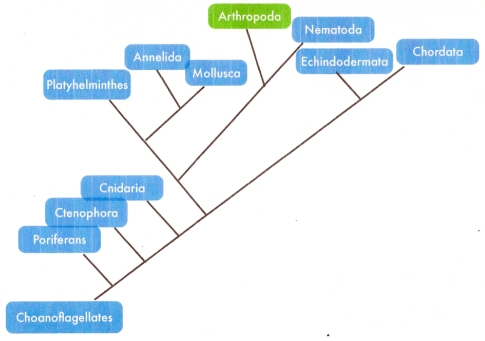
This first phylogenetic tree establishes very general ground for the snow crab through morphological data. It shows that the phylum Arthropod, in which Chionoecetes opilio is classified, is most closely related to the members of the phylum annelida.
This second phylogenetic tree is based on simple morphological data. It shows the close relationship between the snow crab (Chionoecetes opilio) and Chionoecetes bairdi and Chionoecetes tanneri within its genus.
(Both phylogenetic trees were created by Cassandra Cropp, based off of compiled information from various sources listed in the references section of this webpage.)
Learn more about a well known member of the Domain Eukarya and the Kingdom Animalia... The domestic dog! Click here!

